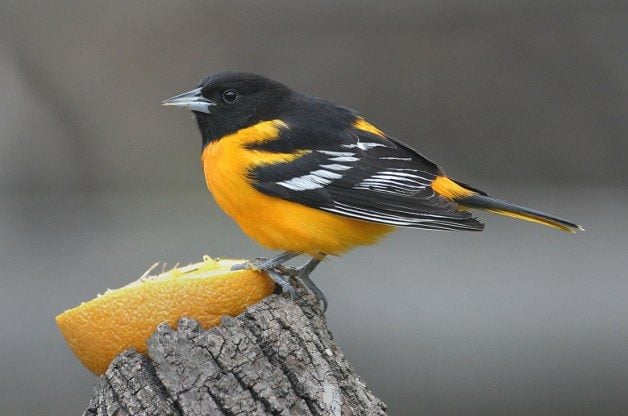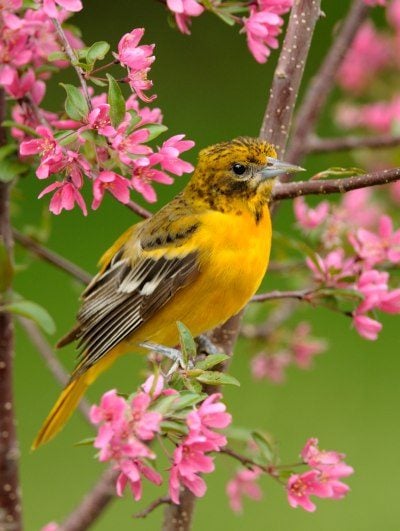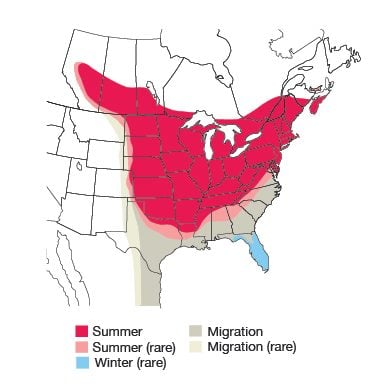How to Identify Baltimore Oriole Birds
Updated: Apr. 19, 2022
This orange bird is a welcome visitor in the spring and summer in the eastern half of the country. Learn how to identify male and female Baltimore orioles.


Male and Female Baltimore Oriole Birds
A male Baltimore oriole bird has a full black hood and fire-orange plumage. Their vibrant underparts, shoulders and rump can vary from flaming orange to yellow-orange. Mature females and juveniles tend to be more drab, with yellow-brown feathers and dark barred wings.
Scientific Name: Icterus galbula
Family: Blackbird
Check out more surprising Baltimore oriole facts.
Baltimore Oriole Nest
After pairing, the female weaves a pouch-shaped nest that hangs from the end of a deciduous tree branch, usually on the edge of an airy woodland. Elms, cottonwoods, maples, willows and apple trees are among their favored nesting sites. The female lays three to six pale gray-blue eggs, which take two weeks to hatch. Both parents care for the chicks, which fledge two weeks later. Discover how orioles weave elaborate nests.
Baltimore Oriole Foods
They may hang around your yard if they like the sugar water in your oriole feeders or hummingbird feeders. Halved oranges, grape jelly, red cherries and red grapes also attract them, but not yellow cherries or green grapes. They’ll also hang upside down or perform other athletic moves to catch bugs or caterpillars. These flashy fliers dine on furry caterpillars that other birds won’t touch. They whack them on a branch to remove the hair, then gulp them down.
In addition to insects and sugar water, you can lure Baltimore oriole birds to your yard with nectar-producing tubular flowers and native trees and shrubs that bear dark-colored fruit. Baltimore orioles use a technique called gaping to get juice out of fruit. They stab a ripe berry with a closed bill, then open wide and lap up the droplets with their tongues.
Learn how to attract orioles to your backyard.
Habitat
You’ll see these birds in deciduous woodlands, parks and suburbs. Their preferred habitat is the edges of forests, and open areas with tall trees. Baltimore orioles are very common in backyards. Learn how to identify orchard orioles.
Bird Song
Listen for a short series of clear whistles in varied pattern.
Bird songs provided by the Cornell Lab of Ornithology.
Discover the 8 types of orioles to look for in North America.
Baltimore Oriole Range Map
These flamboyant birds spend winters from the southeastern states through Central America and northern South America. They migrate north to breed from Georgia to southern Canada. Where their range overlaps with Bullock’s orioles in the Midwest, the two sometimes interbreed. Learn more about Baltimore oriole migration.

Range maps provided by Kaufman Field Guides, the official field guide of Birds & Blooms.

